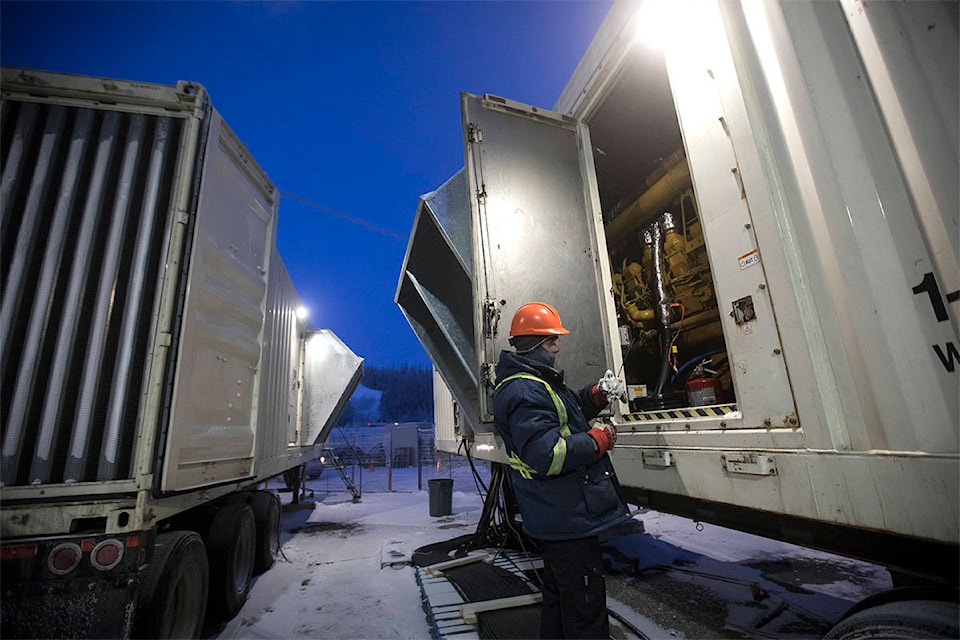On Jan. 5, after a decently mild winter for most of southern Yukon, the temperatures began to dip into the low minus thirties and Yukon Energy began hitting never-before-seen power usage peaks.
It was on this day that the territory first broke its old power usage record, said Stephanie Cunha, communications manager at Yukon Energy. The record would be broken several more times in the following two weeks.
The previous record of 92.99 megawatts was set on Feb. 5, 2018, at 7:44 a.m., said Cuhna in an email, when according to Environment Canada data, morning temperatures were around -35 C.
On Jan. 5, 2020, at 5:01 p.m. and with a temperature around -18 C (the day started around -30 C), Yukon Energy recorded a new peak usage of 94.96 MW. But as temperatures continued to drop into the high negative 30s over the next two weeks, that new record would go on to be shattered several times.
The new peak usage record of 103.84 MW was officially set on Jan. 14, at 5:36 p.m. when the temperature was around -37 C. According to Environment Canada data, that was also the coldest day of the month up until now, with an average temperature throughout the day of -37.8 C.
Even though Yukon Energy was setting records day after day for nearly two weeks, director of operations Guy Morgan said staff weren’t too alarmed.
“We can’t be panicking” he said. “It’s being able to meet the peak with what you have.”
And what Yukon Energy has is several different ways of producing power. During a 100 MW peak, Yukon Energy produces about 60 per cent of the power from the hydro facilities, 12 per cent from the liquefied natural gas (LNG) plant, 10 per cent from the three Yukon Energy diesel generators, 10 per cent from the nine rented generators and the remaining percentage comes from the Dawson City and Faro plants.
If power usage were to ever become uncomfortably high, shutting down the mines is an option.
“You’ve got two mines — Minto and Victoria Gold,” said Morgan. “So we will ask them to either self-generate and get off the grid, or generate into the grid.”
Beyond reducing the power usage, Yukon Energy’s other option is to produce more energy.
“We can go to about 115 (MW) and then we’re going to have to bring more rentals in,” said Morgan.
Therefore, maintaining all the power facilities during the cold snap was very important as basically every unit was being used to meet the peak demands.
At Yukon Energy this job belongs to plant operators like Jared Morgan (who also happens to be Guy’s son.)
Plant operators check all systems under their watch on an hourly basis to make sure that everything is functioning correctly.
“We’re the first line of defence,” said Jared. “We’re the ones that are going to notice any issues with the engines.”
Unlike Yukon Energy’s three diesel units, which are located indoors, the rented units are located outside. During a cold snap both the machines and the workers can fall victim to the extreme temperatures.
Plant operators watch for many cold weather related issues like freezing coolant lines or gelling fuel on the diesel generators, as well as ice build up on the hydro unit’s spillway gate.
One reason Yukon Energy is seeing new peaks in energy consumption by the territory is because of growing infrastructure and residential areas like Whistle Bend, said Guy.
“Most of these people are building with electric heating, where in the past you would put an oil fired furnace in your house,” he said. “Now the customer is passing that on to us … so we are having to generate more to heat houses.”
The territory has been lucky over the past couple years, said Guy, having not endured too many extremely cold days like this January and therefore not consuming extraordinary amounts of power.
“Not that this surprised us — we have a good handle on what our load is and where it’s going at all times,” he said. “But really, to go over 100 megawatts for us was pretty epic.”
Contact Crystal Schick at crystal.schick@yukon-news.com
